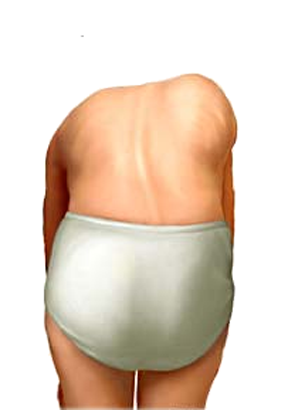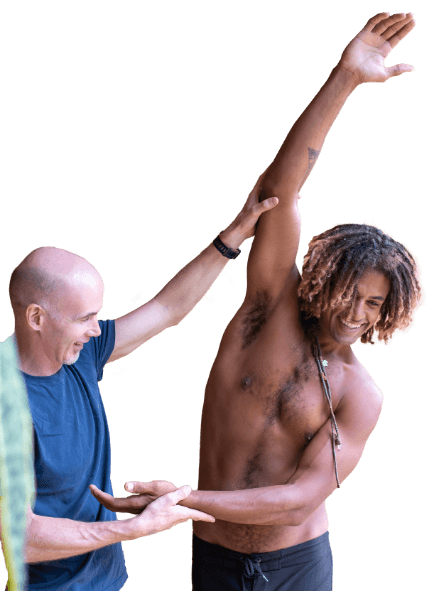
Generally people refer to scoliosis as a disease and culturally the word disease has some pretty bad connotations. You might hear someone say ‘don’t touch me you have a disease’ – that implies a disease is infections. Scoliosis isn’t infectious. Or the doctor says you’ve been diagnosed as having a disease, this conjures up images of something progressing, slow deterioration in your health, a collapse into helplessness and eventual death. That doesn’t happen in scoliosis. In fact nearly all scoliosis is self-limiting, which means the curve will stop progressing eventually, all by itself.
I don’t think that we should use the word disease when we talk about scoliosis, sure technically the medical world can call it a disease as it is “a disorder of structure that produces specific signs or symptoms.”
Scoliosis is a very common condition, infact almost everyone has a slight scoliosis, the heart is off to the left with an average weight of half a pound and the liver is off to the right with an average weight of 2-3 pounds which puts different stresses on the spine, but the curve is usually less than 10 degrees, or so slight that no one notices it.
You’ll find a Scoliosis above 10 degrees in about 2–3% of the population worldwide. Approximately 10% of these progress to a moderate or severe curve. Which means it is above 25 degrees.
No-one is quite sure of what causes a scoliosis, some scientists talk about genetics, others about growth plates, and still others about neural tethering. The Scoliosis Correction Protocol looks at the body as a whole. The x-ray is going to tell us where the spine is in that snap shot of time, much like a photograph is a still image, but it doesn’t tell what the rest of the body is doing. For example, what the feet are doing? The feet are the foundation of the body, they each have 26 bones and are highly adaptable to conform to what we are standing on. However one can be rolled in and the other rolled out. This will make it appear like one leg is longer than the other. If we follow the legs up we come to the pelvis, the pelvis has to be level in order for the spine to be straight. If it isn’t then the spine will have a curve in it.
You see – the feet are connected to the legs, the legs are connected to the hips, and the hips are connected to the spine.
So – could a scoliosis be caused by the feet? The answer is yes.
In order to assess the entire body, we need to act like detectives, looking for the connections and clues along the way. This approach helps us to find all of the many contributing factors that could cause a scoliosis.
After we assess the feet, we then work our way up the body, and take this approach and apply it to the bones of the legs, we can test if they equal in length. Next up – we assess the pelvis – is the pelvis the same on either side?…and so on all the way up to the skull – we could find many areas that could be contributing to a scoliosis.
Once we have looked at the structure of your body we then look at your physiology, how are your eyes, your ears, your guts and your teeth? Differences in any of these things from side to side could feed different information into the brain and nervous system and potentially cause it tighten muscles or changes to bones inappropriately.
Dentists have long known that fillings or crowns that are too proud will cause a torque in the jaw. This torqueing force will then be dissipated down the spine. In 2005 a research group out of Italy created a scoliosis in rats simply by putting a filling on a tooth of half a millimeter. Once they removed the filling the scoliosis went away.

Let me repeat that because I think it shows how important the inter-connections are in our bodies…
When a rat was given a filling of only half a millimeter, the rat developed scoliosis. When the filling was removed, the scoliosis disappeared.
This only naturally begs the question – what tiny things could be contributing to your scoliosis?
And when you resolve these tiny things, could the scoliosis actually be corrected, all by itself?
Now, after we assess your entire physical body, We also want to take your emotions into consideration. We all know how you feel affects your posture, you can tell just by looking at me if I’m happy or sad. Well, sometimes these emotional positions become habit, changing the way you stand, sit and move.
As you can now see – you bones, your organs, your mind, and your emotions all contribute to the health of your spine.
In The Scoliosis Correction Protocol you won’t just be learning how to read your x-ray. No. You will be learning how look at yourself as a whole human being… a person who eats, sees, listens, moves and thinks, and feels.
You will learn how to be a detective of your own body.
I will be teaching you how to do specific tests on yourself.
You will learn how to assess the many different parts of your body that could possibly contribute to the scoliosis.
Knowledge is power.
Once you’ve discovered many of the potential contributing factors of the scoliosis, then you can actually do something about it.
The Scoliosis Correction Protocol will give you an action plan. I will tell you exactly what you need to do in order to improve each of these contributing factors.
So, you won’t just gain new awareness – you will gain new knowledge and be empowered with an action plan to stop the progression and even reduce your scoliosis.
Doesn’t this give you a bright future?
I sure hope so!
Okay – so now I invite you to go to my next blog post about The Cultural Implications Of Scoliosis, and how to Create A Confident and Courageous Mindset to not let anything stop you.
Written by Ed Paget, Osteopath and founder of The Scoliosis Correction Protocol, empowering you to take your health into your own hands.

Over the last 10 years Ed has been building a YouTube library to help people manage their own pain or movement limitations and increase performance through exercise. He regularly adds videos so be sure to subscribe and visit regularly


"Oh My Gosh- I am ALREADY feeling relief after a few days! I used to wake up 2-3 times a night with shooting pain that anti inflammatories couldn't touch. Now I have been waking up just because I want to notice what it feels like to lay in bed pain free- THANK YOU!."

"When I first started with your program I was experience a lot of pain. Walking was difficult. I had to stop and catch my breath every few minutes and lean against a wall for support. Now when I walk with my husband we go for over an hour. I never had to sit down and stop...and, hardly any pain!!! 😊😊 I can’t thank you enough."
Frustrated that you aren't recovering fast enough?
Discover how to heal from illness and injury using movement, food and lifestyle.
Leave a Reply